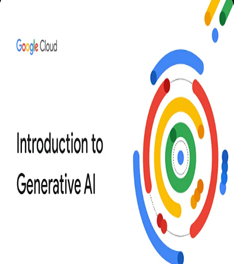Exploring Generative AI and Machine Learning
In the realm of artificial intelligence (AI), two powerful paradigms—Generative AI and Machine Learning (ML)—converge to push the boundaries of what machines can accomplish. Generative AI, with its ability to create novel content autonomously, and ML, with its capacity to learn patterns and make predictions from data, together form a symbiotic relationship that fuels innovation across various industries and domains. In this blog, we delve into the dynamic interplay between Generative AI and ML, their applications, and the transformative impact they have on technology and society.
Understanding Generative AI and Machine Learning: Refers to a subset of AI techniques that enable machines to generate content, such as images, text, and music, autonomously. These systems, powered by sophisticated neural network architectures like Generative Adversarial Networks (GANs) and Variational Autoencoders (VAEs), learn the underlying distribution of a dataset and generate new samples that resemble the original data. On the other hand, Machine Learning is a broader field focused on algorithms and models that enable computers to learn from data and make predictions or decisions without explicit programming. ML techniques, including supervised learning, unsupervised learning, and reinforcement learning, underpin many applications of AI, from image recognition to natural language processing.
Synergy Between Generative AI and ML: The synergy is evident in their shared principles and methodologies. Both disciplines rely on data-driven approaches to extract meaningful patterns and generate insights. Generative AI models, trained using ML techniques, learn to capture the complex relationships and structures within datasets and generate new content that exhibits similar characteristics. Conversely, ML models benefit from AI by leveraging generated data to augment training datasets, improve generalization, and enhance performance on downstream tasks. This mutual reinforcement between Generative AI and ML fuels advancements in AI research and accelerates innovation in fields such as computer vision, natural language understanding, and creative arts.
Applications Across Industries:
- Art and Creativity: Both are transforming the creative landscape by enabling artists, designers, and musicians to explore new avenues of expression. From generating surreal artworks to composing original music, AI-powered tools inspire creativity and foster collaboration between humans and machines.
- Healthcare and Medicine: In healthcare, both play a crucial role in medical imaging, drug discovery, and personalized medicine. AI models generate synthetic medical images for training diagnostic algorithms, simulate biological processes for drug development, and analyze patient data to tailor treatments and interventions.
- Finance and Business: In finance, ML techniques drive predictive analytics, risk management, and algorithmic trading. Generative AI enhances fraud detection by generating synthetic transaction data for anomaly detection models and automates document generation and contract drafting in legal and business domains.
- Gaming and Entertainment: Both revolutionize gaming and entertainment by creating immersive virtual worlds, dynamic characters, and procedural content. AI-generated content enhances player experiences, adapts gameplay in real-time, and generates personalized recommendations for users.
Challenges and Opportunities: Despite their transformative potential, it face challenges related to data bias, ethical considerations, and interpretability. Ensuring fairness, transparency, and accountability in AI systems remains paramount to mitigate risks and foster trust in AI technologies. Moreover, ongoing research efforts focus on advancing techniques for robustness, scalability, and controllability in AI and ML models, paving the way for more reliable and ethical AI applications.
Conclusion: Generative AI and Machine Learning represent complementary approaches to AI that synergize to drive innovation, creativity, and intelligence. Their combined capabilities empower individuals and organizations to tackle complex problems, unlock new insights, and create value across diverse domains. As we navigate the evolving landscape of AI, the collaboration between both holds the promise of a future where machines not only understand but also imagine, innovate, and inspire.



1 thought on “Generative AI and Machine Learning: Bridging Creativity and Intelligence”